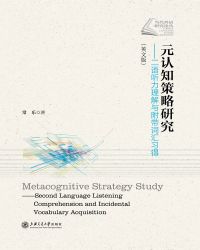5.6 Conclusion
您可以在百度里搜索“元认知策略研究:二语听力理解与附带词汇习得(英文版) 艾草文学(www.321553.xyz)”查找最新章节!
5.6 Conclusion
The key findings of Research Questions 1 and 2 of this study are:
(a) Three-time listening resulted in better listening comprehension than one-time listening, but there was no additional benefit for either schema raising or inferencing training. Repetition of the information provided enough time for processing and checking the information and facilitated listening comprehension. (b) Overall the treatments resulted in relatively low levels of vocabulary acquisition. A greater effect was evident on the acquisition of lexical form and on receptive knowledge than on production. The low levels of vocabulary acquisition are not surprising given that the learners were exposed to the target items only through listening and that what was being measured was incidental rather than intentional learning. It is also not surprising that the listening activities benefited receptive knowledge and form more than production as receptive knowledge and recognition of form precede productive knowledge of vocabulary.
(c) There were few group differences regarding vocabulary acquisition. In Cycle 1 inferencing training significantly benefited immediate production of the target items and also acquisition of the form of the target items when compared to the one-time listening condition. However, no other group differences reached statistical significance. Inferencing training plus the opportunity to listen three times may have helped the students to guess the unfamiliar words and thus aided acquisition. The three-time listening group and the schema-raising group did not acquire more words than the one-time listening group, possibly because in order to complete the listening tasks they focused more on the general content of the texts rather than the individual words.
(d) Listening comprehension was only found to be significantly related to vocabulary acquisition in both cycles for the whole sample but the correlations were generally weak (i. e. the shared variance ranged only from a minimum of 1.5%to a maximum of 12%). When relationship between listening comprehension and vocabulary acquisition for the individual groups was investigated, very few significant correlations were found in either cycle. The weak relationship between listening comprehension and vocabulary acquisition can be explained by the fact that listening-for-comprehension and listening-to-learn involve different mental processes (Faerch and Kasper, 1986). 元认知策略研究:二语听力理解与附带词汇习得(英文版)
